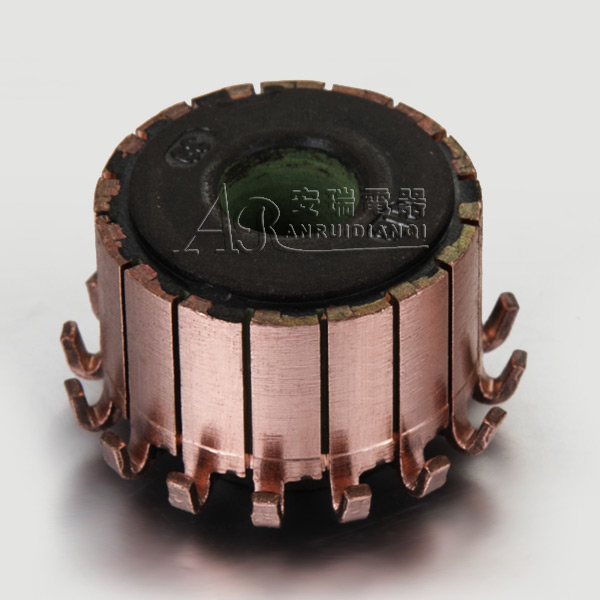

Structurally, the commutator is a circle with several contact pieces connected to each contact on the rotor. The two electrodes connected outside are called brushes to contact it, and only two of them are contacted at the same time. The principle of the commutator is that when the coil passes the current, it will be rotated by the attraction and repulsion force under the action of the magnet. When it turns to balance with the magnet, the original energized wire will be compared with the contact on the commutator. The sheet is separated from the brush, and the brush is connected to the contact sheet corresponding to the set of coils that produces the driving force, so that the DC motor will start to rotate after repeating it.
The commutator mainly has hook type, groove type, flat type and other specifications. Refined from imported raw materials, the performance of the product has reached an advanced level. It is widely used in power tools, household appliances, automobiles, motorcycle motors and other fields; collector rings, carbon brush holders, and wiring boards have various specifications and models of products, which are used in Automobile generators, gasoline generators and other fields. The commutator functions as a rectifier, and its function is to make the direction of the current in the armature winding alternate to ensure that the direction of the electromagnetic torque remains unchanged. In the generator, the commutator can make the alternating electric potential in the element into the direct electric potential between the brushes; in the motor, it can make the external direct current into the alternating current in the element, producing a constant direction torque.
The commutator and the brush form a corresponding sliding friction pair in the motor. The influence of the commutator on the performance of the motor mainly depends on the electrical contact behavior when the brush is sliding at a high speed under the conditions. In addition to transmitting longitudinal current, the commutator also has the task of current commutation in the short-circuit armature coil. The effect of the commutator on the performance of the motor depends on the process of circuit conduction when it slides with the brush at a relatively high speed under the conditions. Although the description of this process is more complicated and theoretical research is still under development, through comparative analysis of the operating conditions of the micromotors, it can be determined that wear is the key factor leading to changes in contact resistance.
